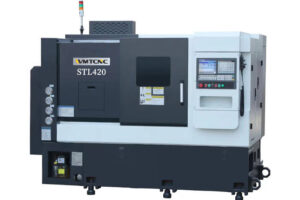A Closer Look at CNC Machines: How They Work

CNC machines have revolutionized the manufacturing industry with their precision and efficiency. But how do they work exactly? In this article, we’ll take a closer look at the inner workings of CNC machines.
Section 1: The Basics of CNC Machines
CNC machines are computer-controlled machines that can perform a wide range of tasks, from cutting and drilling to shaping and milling. The basic components of a CNC machine include the computer, the CNC controller, the machine tool, and the workpiece.
Section 2: The CNC Controller
The CNC controller is the brain of the machine and is responsible for interpreting the instructions from the computer and sending them to the machine tool. It uses a series of algorithms and codes to control the movement of the machine tool.
Section 3: The Machine Tool
The machine tool is the part of the CNC machine that actually performs the desired task, such as cutting or drilling. It is controlled by the CNC controller and can move in multiple directions to create complex shapes and designs.
Section 4: The Workpiece
The workpiece is the material that is being shaped or cut by the machine tool. It is secured in place on the machine’s worktable, and the machine tool moves around it to create the desired shape or design.
Section 5: The CNC Process
The CNC process begins with the creation of a digital design file, which is then loaded into the computer. The CNC controller interprets the design file and sends instructions to the machine tool, which then performs the desired task on the workpiece.
Conclusion:
CNC machines have revolutionized the manufacturing industry by providing precision and efficiency that was previously impossible to achieve. By understanding the basics of how CNC machines work, we can better appreciate the incredible CNC Machining parts behind these machines.






